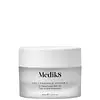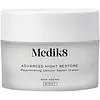What's inside
What's inside
 Key Ingredients
Key Ingredients

 Benefits
Benefits

 Concerns
Concerns

 Ingredients Side-by-side
Ingredients Side-by-side

Water
Skin ConditioningTetrahexyldecyl Ascorbate
AntioxidantDiethylamino Hydroxybenzoyl Hexyl Benzoate
UV FilterDibutyl Adipate
EmollientDimethicone
EmollientEthylhexyl Triazone
UV AbsorberBis-Ethylhexyloxyphenol Methoxyphenyl Triazine
Skin ConditioningC12-15 Alkyl Benzoate
AntimicrobialDicaprylyl Carbonate
EmollientCetearyl Alcohol
EmollientGlycerin
HumectantCoco-Glucoside
CleansingPhenoxyethanol
PreservativeAcrylates/C10-30 Alkyl Acrylate Crosspolymer
Emulsion StabilisingCetearyl Glucoside
EmulsifyingTocopheryl Acetate
AntioxidantHydroxyacetophenone
AntioxidantDisodium EDTA
Benzoic Acid
MaskingXanthan Gum
EmulsifyingCitrus Grandis Peel Oil
MaskingSodium Hydroxide
BufferingDehydroacetic Acid
PreservativeSodium Hyaluronate
HumectantCitrus Limon Peel Oil
MaskingCitrus Aurantium Bergamia Fruit Oil
MaskingPelargonium Graveolens Flower Oil
MaskingEthylhexylglycerin
Skin ConditioningLimonene
PerfumingCitronellol
PerfumingLinalool
PerfumingGeraniol
PerfumingCitral
PerfumingWater, Tetrahexyldecyl Ascorbate, Diethylamino Hydroxybenzoyl Hexyl Benzoate, Dibutyl Adipate, Dimethicone, Ethylhexyl Triazone, Bis-Ethylhexyloxyphenol Methoxyphenyl Triazine, C12-15 Alkyl Benzoate, Dicaprylyl Carbonate, Cetearyl Alcohol, Glycerin, Coco-Glucoside, Phenoxyethanol, Acrylates/C10-30 Alkyl Acrylate Crosspolymer, Cetearyl Glucoside, Tocopheryl Acetate, Hydroxyacetophenone, Disodium EDTA, Benzoic Acid, Xanthan Gum, Citrus Grandis Peel Oil, Sodium Hydroxide, Dehydroacetic Acid, Sodium Hyaluronate, Citrus Limon Peel Oil, Citrus Aurantium Bergamia Fruit Oil, Pelargonium Graveolens Flower Oil, Ethylhexylglycerin, Limonene, Citronellol, Linalool, Geraniol, Citral
Water
Skin ConditioningSqualane
EmollientCaprylic/Capric Triglyceride
MaskingDimethicone
EmollientGlycerin
HumectantStearic Acid
CleansingPhytosterols
Skin ConditioningPropylene Glycol
HumectantC12-16 Alcohols
EmollientSodium Acrylate/Sodium Acryloyldimethyl Taurate Copolymer
Emulsion StabilisingCetearyl Alcohol
EmollientPalmitic Acid
EmollientCeramide NP
Skin ConditioningCetearyl Olivate
Linoleic Acid
CleansingBehenyl Alcohol
EmollientHydrogenated Lecithin
EmulsifyingTocopheryl Acetate
AntioxidantSorbitan Olivate
EmulsifyingPhenoxyethanol
PreservativeBenzyl Alcohol
PerfumingAmelanchier Alnifolia Fruit Extract
Skin ConditioningEthylhexylglycerin
Skin ConditioningAcetyl Glucosamine
Skin ConditioningCitric Acid
BufferingSorbitol
HumectantRosmarinus Officinalis Leaf Oil
MaskingCitrus Aurantium Amara Flower Oil
MaskingLavandula Angustifolia Herb Oil
PerfumingCitrus Aurantium Dulcis Peel Oil
MaskingHylocereus Undatus Fruit Extract
Skin ConditioningDehydroacetic Acid
PreservativeTremella Fuciformis Extract
HumectantSodium Lauroyl Lactylate
EmulsifyingAnthemis Nobilis Flower Oil
MaskingPogostemon Cablin Leaf Oil
MaskingVetiveria Zizanoides Root Oil
MaskingAscorbic Acid
AntioxidantDisodium EDTA
Ceramide AP
Skin ConditioningCeteareth-25
CleansingPhytosphingosine
Skin ConditioningCholesterol
EmollientXanthan Gum
EmulsifyingCarbomer
Emulsion StabilisingCetyl Alcohol
EmollientBehenic Acid
CleansingCeramide Ns
Skin ConditioningFerric Hexapeptide-35
Skin ConditioningCeramide EOP
Skin ConditioningCeramide Eos
Skin ConditioningCaprooyl Phytosphingosine
Skin ConditioningCaprooyl Sphingosine
Skin ConditioningAscorbyl Palmitate
AntioxidantTocopherol
AntioxidantGeraniol
PerfumingLimonene
PerfumingLinalool
PerfumingWater, Squalane, Caprylic/Capric Triglyceride, Dimethicone, Glycerin, Stearic Acid, Phytosterols, Propylene Glycol, C12-16 Alcohols, Sodium Acrylate/Sodium Acryloyldimethyl Taurate Copolymer, Cetearyl Alcohol, Palmitic Acid, Ceramide NP, Cetearyl Olivate, Linoleic Acid, Behenyl Alcohol, Hydrogenated Lecithin, Tocopheryl Acetate, Sorbitan Olivate, Phenoxyethanol, Benzyl Alcohol, Amelanchier Alnifolia Fruit Extract, Ethylhexylglycerin, Acetyl Glucosamine, Citric Acid, Sorbitol, Rosmarinus Officinalis Leaf Oil, Citrus Aurantium Amara Flower Oil, Lavandula Angustifolia Herb Oil, Citrus Aurantium Dulcis Peel Oil, Hylocereus Undatus Fruit Extract, Dehydroacetic Acid, Tremella Fuciformis Extract, Sodium Lauroyl Lactylate, Anthemis Nobilis Flower Oil, Pogostemon Cablin Leaf Oil, Vetiveria Zizanoides Root Oil, Ascorbic Acid, Disodium EDTA, Ceramide AP, Ceteareth-25, Phytosphingosine, Cholesterol, Xanthan Gum, Carbomer, Cetyl Alcohol, Behenic Acid, Ceramide Ns, Ferric Hexapeptide-35, Ceramide EOP, Ceramide Eos, Caprooyl Phytosphingosine, Caprooyl Sphingosine, Ascorbyl Palmitate, Tocopherol, Geraniol, Limonene, Linalool
 Reviews
Reviews

Ingredients Explained
These ingredients are found in both products.
Ingredients higher up in an ingredient list are typically present in a larger amount.
Cetearyl alcohol is a mixture of two fatty alcohols: cetyl alcohol and stearyl alcohol. It is mainly used as an emulsifier. Emulsifiers help prevent the separation of oils and products. Due to its composition, it can also be used to thicken a product or help create foam.
Cetearyl alcohol is an emollient. Emollients help soothe and hydrate the skin by trapping moisture.
Studies show Cetearyl alcohol is non-toxic and non-irritating. The FDA allows products labeled "alcohol-free" to have fatty alcohols.
This ingredient is usually derived from plant oils such as palm, vegetable, or coconut oils. There is debate on whether this ingredient will cause acne.
Due to the fatty acid base, this ingredient may not be Malassezia folliculitis safe.
Learn more about Cetearyl AlcoholDehydroacetic Acid is fungicide and bactericide. It is used as a preservative in cosmetics. Preservatives help elongate the shelf life of a product.
Dehydroacetic Acid is not soluble in water.
Dimethicone is a type of synthetic silicone created from natural materials such as quartz.
What it does:
Dimethicone comes in different viscosities:
Depending on the viscosity, dimethicone has different properties.
Ingredients lists don't always show which type is used, so we recommend reaching out to the brand if you have questions about the viscosity.
This ingredient is unlikely to cause irritation because it does not get absorbed into skin. However, people with silicone allergies should be careful about using this ingredient.
Note: Dimethicone may contribute to pilling. This is because it is not oil or water soluble, so pilling may occur when layered with products. When mixed with heavy oils in a formula, the outcome is also quite greasy.
Learn more about DimethiconeDisodium EDTA plays a role in making products more stable by aiding other preservatives.
It is a chelating agent, meaning it neutralizes metal ions that may be found in a product.
Disodium EDTA is a salt of edetic acid and is found to be safe in cosmetic ingredients.
Learn more about Disodium EDTAEthylhexylglycerin (we can't pronounce this either) is commonly used as a preservative and skin softener. It is derived from glyceryl.
You might see Ethylhexylglycerin often paired with other preservatives such as phenoxyethanol. Ethylhexylglycerin has been found to increase the effectiveness of these other preservatives.
Geraniol is used to add fragrance/parfum to a product. It is the main component of citronellol. It is a monoterpenoid and an alcohol.
Monoterpenes are naturally found in many parts of different plants.
Geraniol can be found in many essential oils including Rose Oil and Citronella Oil. The scent of Geraniol is often described as "rose-like". Many foods also contain Geraniol for fruit flavoring.
Geraniol can irritate the skin when exposed to air. However, irritation depends on the ability of geraniol to penetrate into the skin. In general, geraniol is not able to penetrate skin easily.
Geraniol is colorless and has low water-solubility. However, it is soluble in common organic solvents.
Like citronellol, it is a natural insect repellent.
2,6-Octadien-1-ol, 3,7-dimethyl-, (2E)-
Learn more about GeraniolGlycerin is already naturally found in your skin. It helps moisturize and protect your skin.
A study from 2016 found glycerin to be more effective as a humectant than AHAs and hyaluronic acid.
As a humectant, it helps the skin stay hydrated by pulling moisture to your skin. The low molecular weight of glycerin allows it to pull moisture into the deeper layers of your skin.
Hydrated skin improves your skin barrier; Your skin barrier helps protect against irritants and bacteria.
Glycerin has also been found to have antimicrobial and antiviral properties. Due to these properties, glycerin is often used in wound and burn treatments.
In cosmetics, glycerin is usually derived from plants such as soybean or palm. However, it can also be sourced from animals, such as tallow or animal fat.
This ingredient is organic, colorless, odorless, and non-toxic.
Glycerin is the name for this ingredient in American English. British English uses Glycerol/Glycerine.
Learn more about GlycerinLimonene is a fragrance that adds scent and taste to a formulation.
It's found in the peel oil of citrus fruits and other plants such as lavender and eucalyptus. The scent of limonene is generally described as "sweet citrus".
Limonene acts as an antioxidant, meaning it helps neutralize free radicals.
When exposed to air, oxidized limonene may sensitize the skin. Because of this, limonene is often avoided by people with sensitive skin.
The term 'fragrance' is not regulated in many countries. In many cases, it is up to the brand to define this term. For instance, many brands choose to label themselves as "fragrance-free" because they are not using synthetic fragrances. However, their products may still contain ingredients such as essential oils that are considered a fragrance.
Learn more about LimoneneLinalool is a fragrance and helps add scent to products. It's derived from common plants such as cinnamon, mint, citrus, and lavender.
Like Limonene, this ingredient oxidizes when exposed to air. Oxidized linalool can cause allergies and skin sensitivity.
This ingredient has a scent that is floral, spicy tropical, and citrus-like.
Learn more about LinaloolPhenoxyethanol is a preservative that has germicide, antimicrobial, and aromatic properties. Studies show that phenoxyethanol can prevent microbial growth. By itself, it has a scent that is similar to that of a rose.
It's often used in formulations along with Caprylyl Glycol to preserve the shelf life of products.
Tocopheryl Acetate is AKA Vitamin E. It is an antioxidant and protects your skin from free radicals. Free radicals damage the skin by breaking down collagen.
One study found using Tocopheryl Acetate with Vitamin C decreased the number of sunburned cells.
Tocopheryl Acetate is commonly found in both skincare and dietary supplements.
Learn more about Tocopheryl AcetateWater. It's the most common cosmetic ingredient of all. You'll usually see it at the top of ingredient lists, meaning that it makes up the largest part of the product.
So why is it so popular? Water most often acts as a solvent - this means that it helps dissolve other ingredients into the formulation.
You'll also recognize water as that liquid we all need to stay alive. If you see this, drink a glass of water. Stay hydrated!
Learn more about WaterXanthan gum is used as a stabilizer and thickener within cosmetic products. It helps give products a sticky, thick feeling - preventing them from being too runny.
On the technical side of things, xanthan gum is a polysaccharide - a combination consisting of multiple sugar molecules bonded together.
Xanthan gum is a pretty common and great ingredient. It is a natural, non-toxic, non-irritating ingredient that is also commonly used in food products.
Learn more about Xanthan Gum